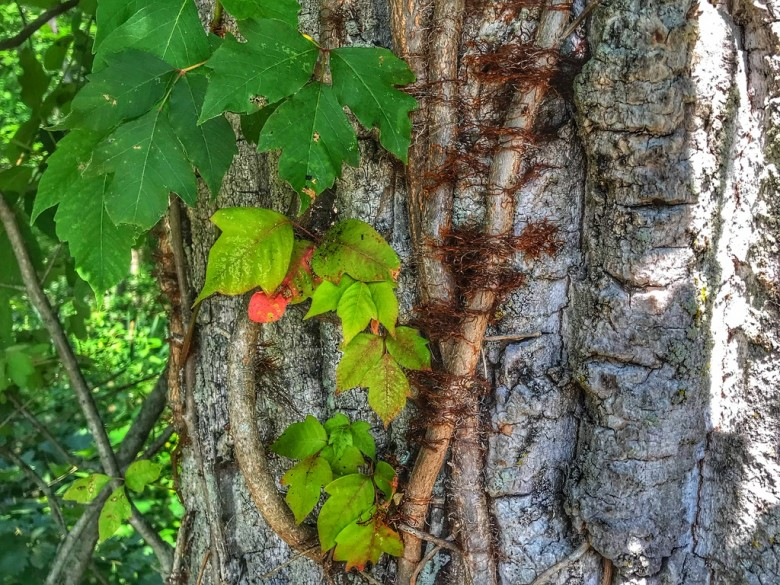Every time I see a child playing in the park dangerously close to poison ivy, I want to make an impromptu public service announcement. Since people don’t always take kindly to me interrupting their day at the park with a poison ivy lesson, I will spread the word in a less intrusive way!
I am a firm believer that everyone should learn to identify poison ivy. Here in WNY, it grows in ample supply. Even if you live in a city apartment and rarely hit the park, there is still a chance of accidental contact.
The best protection is learning to properly identify poison ivy’s many faces across all seasons. Easier said than done, right? The old adage “leaves of three, let it be” is great beginner advice for avoiding contact. The fact is you need a few more identification tricks to successfully dodge this highly adaptable plant.
Poison Ivy Identification
Leaves
- Leaves are compound with three leaflets. The middle, terminal leaflet has a visible stalk that is clearly longer than the stalk of the two lateral leaflets. There is no universal shape for poison ivy leaves. They can be entire (smooth-edged) or sparsely toothed, dull or glossy, and even shaped like mittens. In most cases, the tips of the leaves will be pointed. Leaves are set alternately along the vine, meaning they are never opposite of each other.
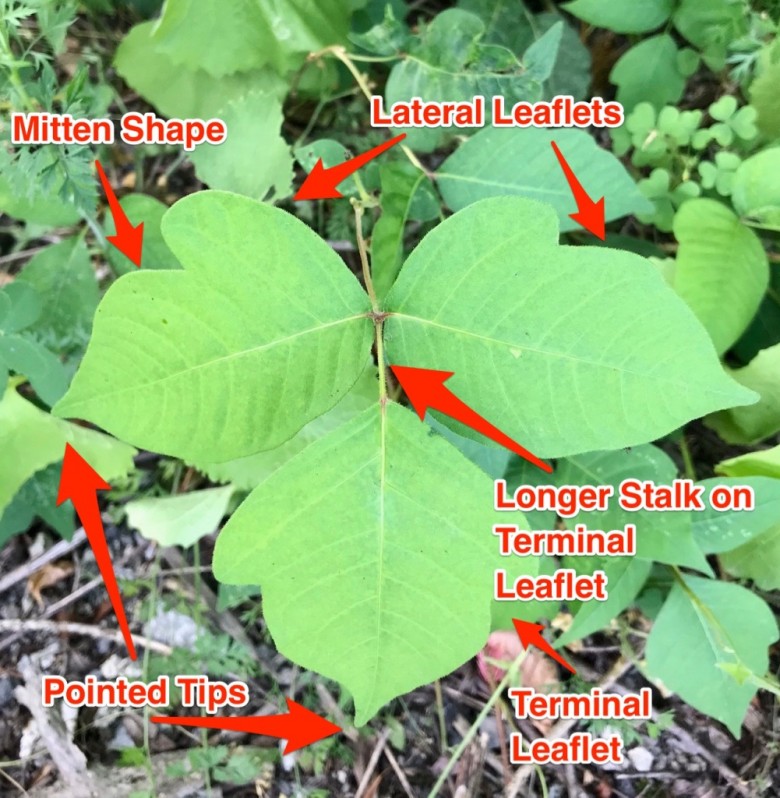
- Note that the color of poison ivy leaves can vary greatly. In spring and summer, the leaves are various shades of green and sometimes yellow. In the fall, they can turn red, orange, or yellow. Ironically, the leaves can be quite beautiful!

Vines
- The poison ivy vine is usually smooth and green when young and turns grayish to brown when older. Here in WNY, we have a lot of vining of poison ivy around trees. These hairy and sometimes huge vines are actually the aerial roots of the plant.
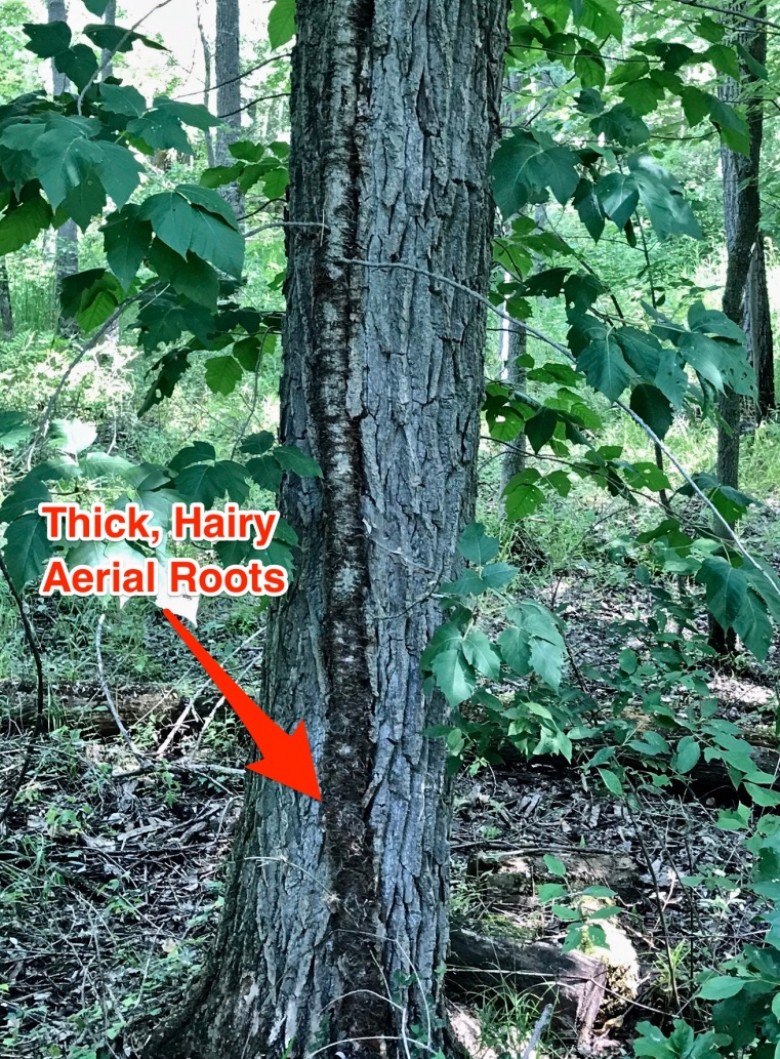
- Since poison ivy is such a prolific climber, be cautious of its leaves hanging from a host tree. It is easy to think they are the tree’s leaves and walk face first into poison ivy! In the woods and clearings, poison ivy can take on a few different forms. Plants can be erect and bushy, or sprawl along the ground.
Flowers and Berries
- Yes, poison ivy has both flowers and berries! The flowers are not very showy or attention-grabbing. They are small, five-petaled, green, and in branching clusters.
- After flowering, poison ivy produces clusters of white berries.
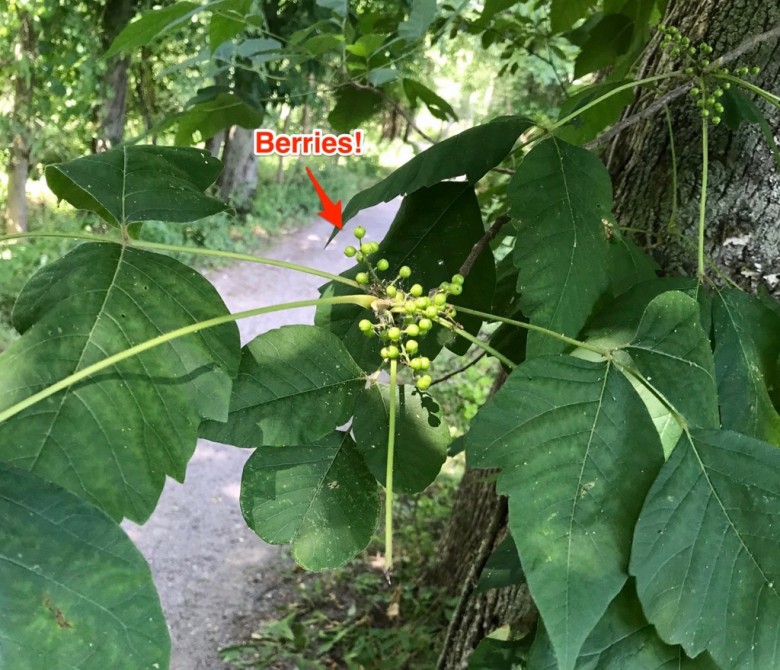
- Here in WNY, the berries usually appear in early summer and can remain through the winter months.
Non-Toxic Poison Ivy Lookalikes
- Virginia Creeper – has similar climbing ability, but has five leaflets, rather than three.
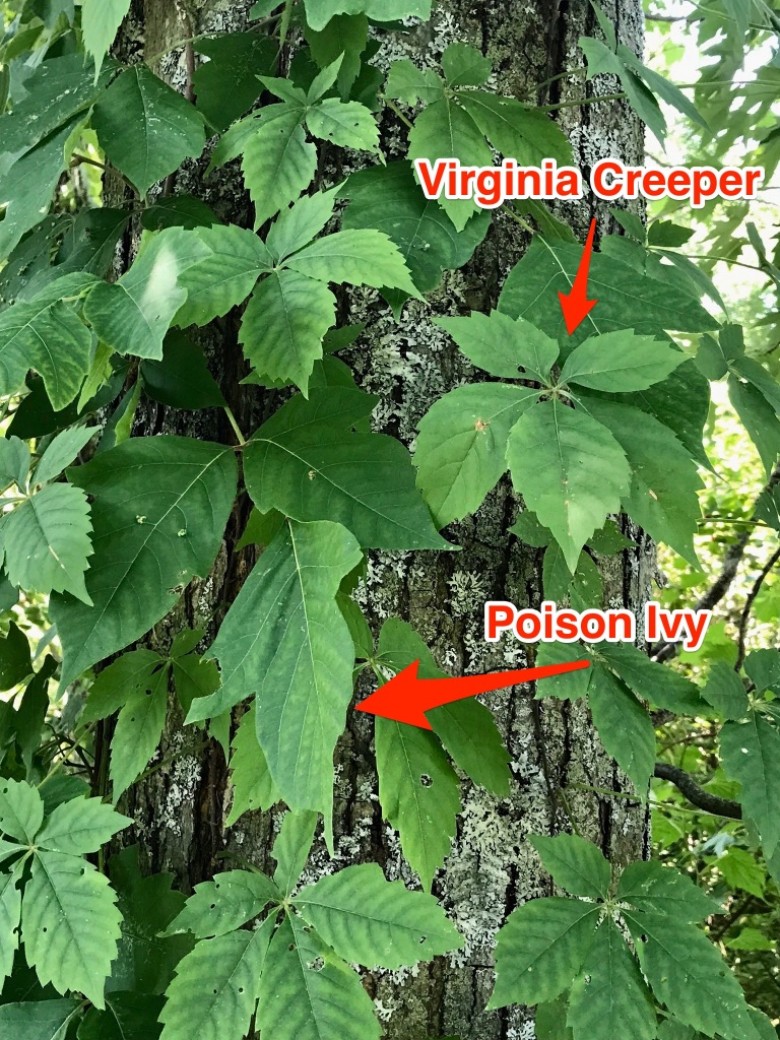
- Brambles/Blackberries – Stems have thorns/prickles and leaves are finely serrated. Poison ivy never has thorns or prickles or finely serrated leaves.
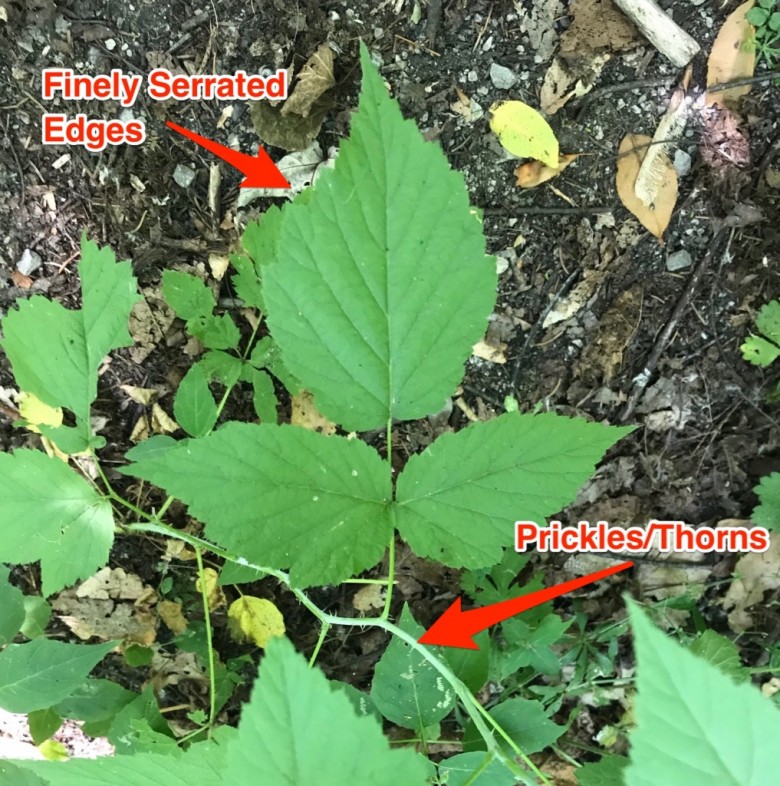
- Box Elder Seedlings – Leaves are opposite each other along the stem. Poison ivy always has an alternate arrangement of leaves.
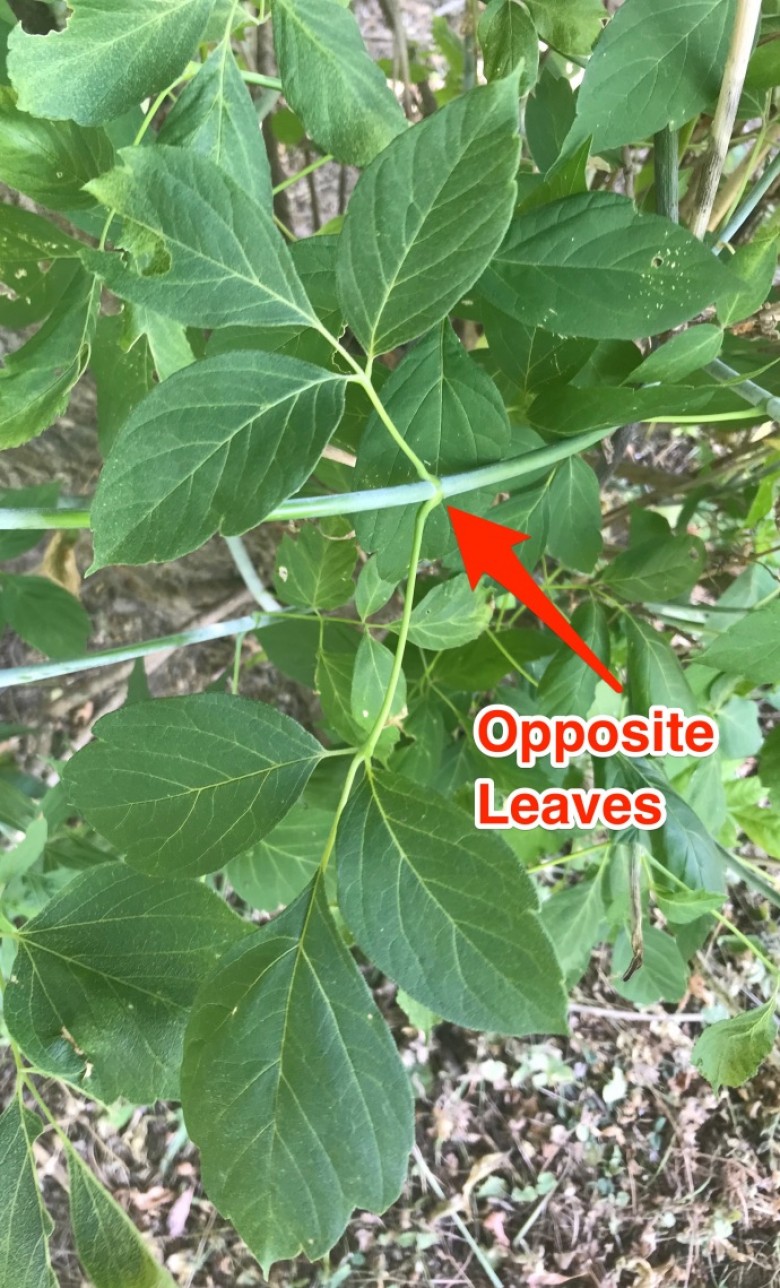
- Wild Strawberries – Edges of the leaves are completely serrated. Poison ivy leaves may have a few teeth but are never completely serrated.
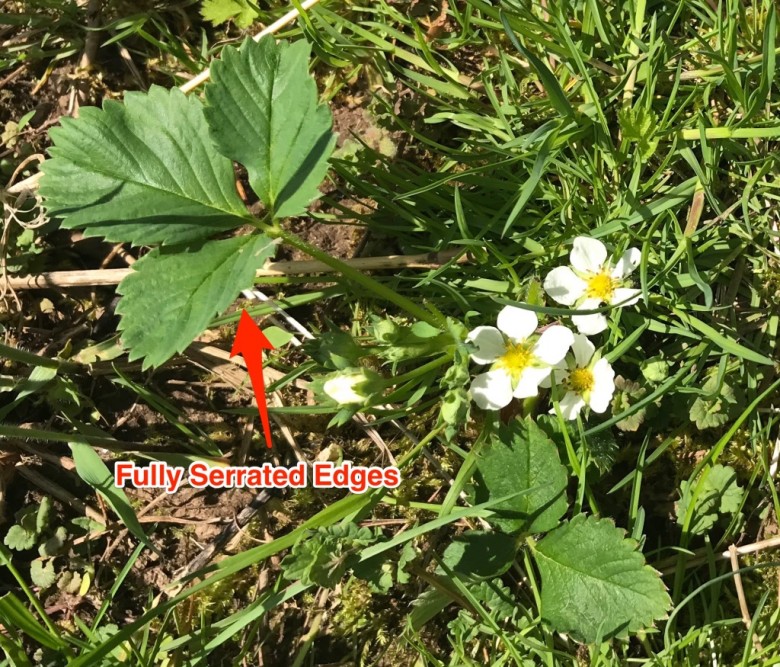
Now you can identify poison ivy, but why is it so important to avoid it? The scientific name for poison ivy is Toxicodendron radicans which gives you a clue to its devious ways. The chemical compound that produces the allergic reaction in most people is called urushiol. This is an oily substance that spreads easily and can linger for years. All parts of the plant in all seasons contain this rash-inducing oil.
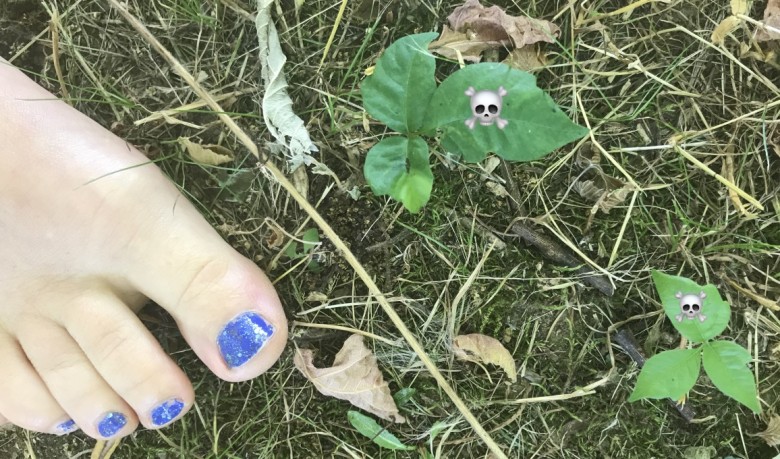
Imagine that you are walking barefoot in the park and then bam, poison ivy. What to do now?
- If you know you just made contact, immediately use rubbing alcohol to clean the area. No rubbing alcohol? Get somewhere quickly where you can wash with warm, soapy water. The jury is still out on how long you have to wash away the oil and stay rash-free. Some say a few hours, but why risk it? Use a washcloth or something that causes friction. This is an oil you are trying to remove, so think about how difficult it is to remove oil with water. There are special poison ivy soaps you can buy, or just try a dish soap that is already formulated to cut through grease. You can also try applying the crushed leaves of jewelweed (Impatiens capensis) to the affected area. Nature serves up this remedy, as jewelweed is often found growing alongside poison ivy.
- Be sure to wash everything that might have come into contact with poison ivy in a separate load in hot water. Don't forget to clean your shoes, tools, and pets. Fido can carry the potential to make you very itchy!
Even after all of these precautions, you may still end up with an allergic reaction. Since it can take as long as a week for the rash to show up, you may have thought you were in the clear. Streaky red inflammation appears first, quickly followed by blisters that can last for weeks. Contrary to popular belief, the oozing blisters are not contagious. Poison ivy spreads only through urushiol, which is not found in the blisters.
Once you have a reaction, there is no universally approved method to help deal with the itchy misery. Oatmeal baths and anti-itch creams may bring some relief. Try your hardest not to scratch, as there is a risk of infection and it delays healing. Notify your doctor immediately if you have a severe reaction or develop a rash in a sensitive area.
Poison ivy is definitely a menace, but one you can understand and avoid. Once you know how to identify poison ivy, you can enjoy the rest of the summer outdoors without fear!
